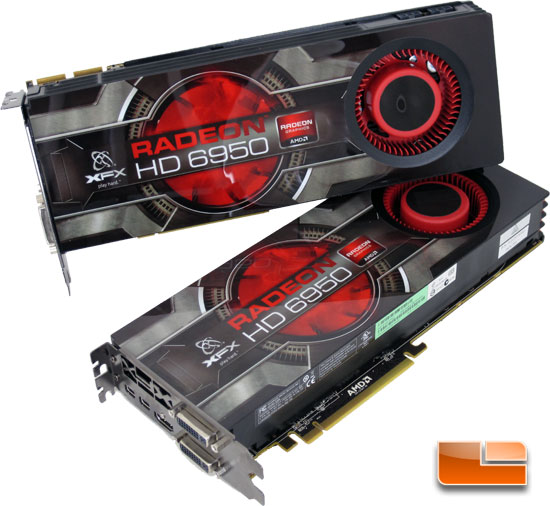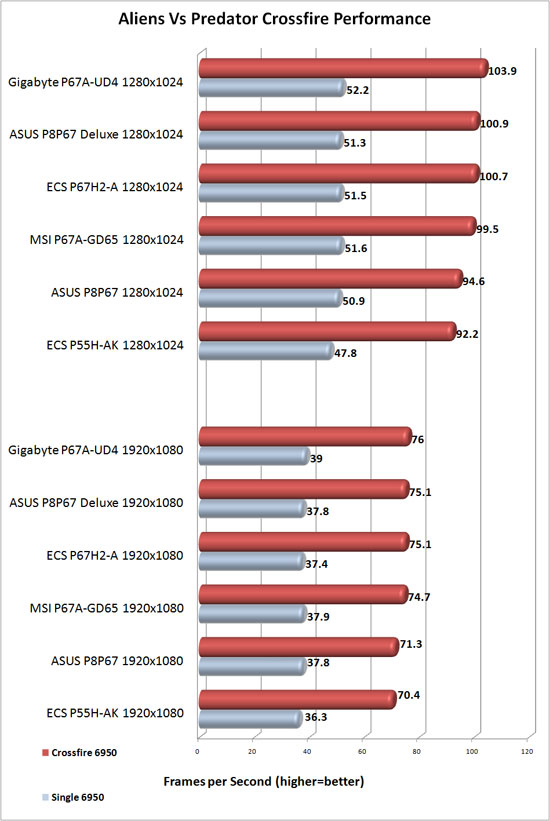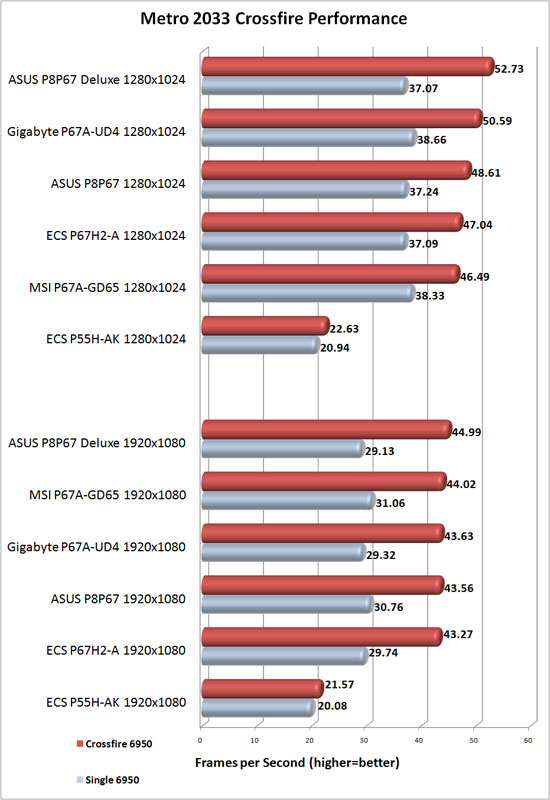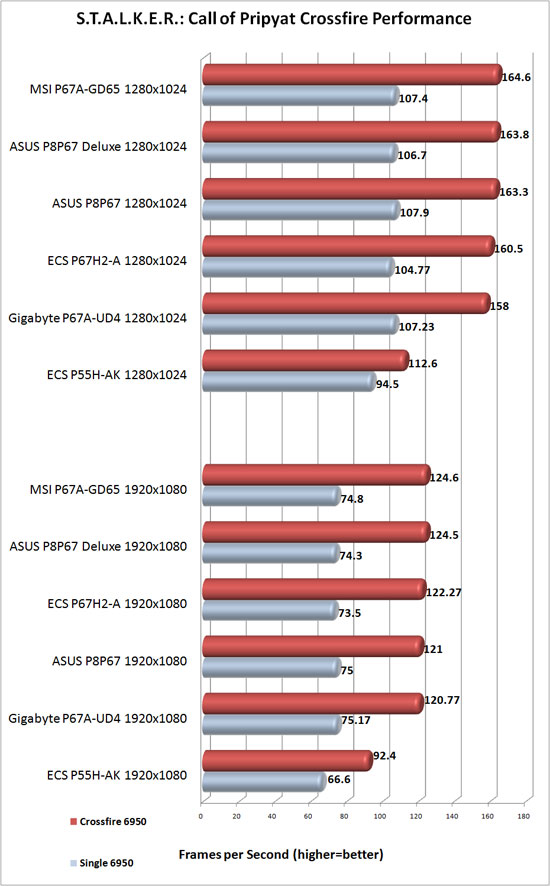GIGABYTE P67A-UD4 Motherboard Performance Review
GIGABYTE P67A-UD4 AMD CrossFireX Scaling

As with the previous page where we tested the NVIDIA SLI scaling between the chipsets, we want to do the same for the AMD CrossfireX. When we decided to run this series of tests, we were able to get in touch with our friends over at XFX and they kindly sent over a pair of XFX Radeon HD 6950’s.

The GIGABYTE P67A-UD4 seems to have an affinity for Aliens Vs. Predator. In both our NVIDIA SLI scaling and CrossfireX testing the P67A-UD4 performed great. At 1280×1024 the overall performance was 3% faster than the ASUS P8P67 Deluxe when running CrossfireX. 1920×1080 the GIGABYTE P67A-UD4 was 1.2% faster than the ASUS P8P67 Deluxe. When we look at the scaling capabilities of the boards, the GIGABYTE P67A-UD4 was 99% faster at 1280×1024 and 94.9% faster when using both XFX Radeon HD 6950’s compared to a single 6950. The ASUS P8P67 Deluxe was 96.7% faster at 1280×1024 and 98.7% faster at 1920×1080. The CrossfireX scaling of the ASUS P8P67 Deluxe is slightly misleading; the 98.7% increase is accurate, but the single card and Crossfire performance were both lower than the GIGABYTE P67A-UD4. There just happens to be a larger margin between the numbers.

Metro 2033 doesn’t scale quite as well as one would hope, at least not in CrossfireX. At the resolution of 1280×1024 the GIGABYTE P67A-UD4 saw an increase of 30.9% and at 1920×1080 we saw a gain of 48.8%. Both of these gains are quite comparable to what we have seen on our other P67 systems.

In S.T.A.L.K.E.R.: Call of Pripyat the GIGABYTE P67A-UD4 wasn’t quite up to the same performance as our other Intel P67 systems that we have looked at. At 1280×1024 our top board saw a gain of 53.3% and 66.6% at 1920×1080. The GIGABYTE P67A-UD4 saw a gain of 47.3% at 1280×1024 and 60.7% at 1920×1080. That’s a drop of 6% at both resolutions.

Comments are closed.